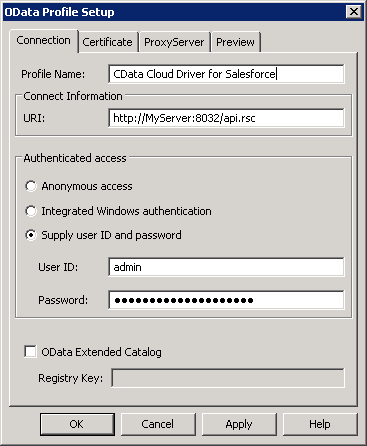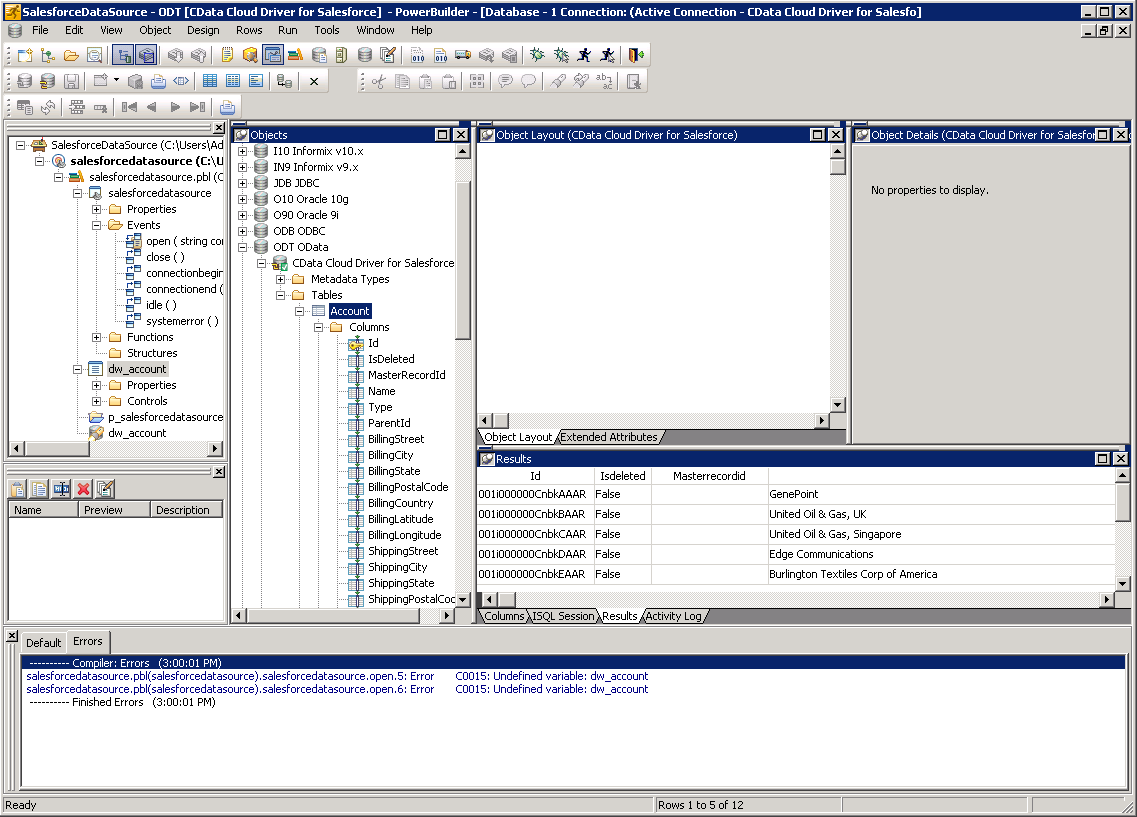Model Context Protocol (MCP) finally gives AI models a way to access the business data needed to make them really useful at work. CData MCP Servers have the depth and performance to make sure AI has access to all of the answers.
Try them now for free →Consume WooCommerce OData Feeds in PowerBuilder
This article demonstrates how to consume WooCommerce data as OData feeds from PowerBuilder using the API Server.
The CData API Server, when paired with the ADO.NET Provider for WooCommerce (or any of 200+ other ADO.NET Providers), produces secure feeds of WooCommerce data that you can consume in PowerBuilder DataWindows. The API Server supports the major Web services, including OData, Atom, JSON, HTML, CSV, TSV, and RSS. It also supports the major authentication schemes and SSL.
This article shows how to create a DataWindow that uses the CData API Server to execute reads and writes.
Set Up the API Server
Follow the steps below to begin producing secure WooCommerce OData services:
Deploy
The API Server runs on your own server. On Windows, you can deploy using the stand-alone server or IIS. On a Java servlet container, drop in the API Server WAR file. See the help documentation for more information and how-tos.
The API Server is also easy to deploy on Microsoft Azure, Amazon EC2, and Heroku.
Connect to WooCommerce
After you deploy the API Server and the ADO.NET Provider for WooCommerce, provide authentication values and other connection properties needed to connect to WooCommerce by clicking Settings -> Connections and adding a new connection in the API Server administration console.
WooCommerce supports the following authentication methods: one-legged OAuth1.0 Authentication and standard OAuth2.0 Authentication.
Connecting using one-legged OAuth 1.0 Authentication
Specify the following properties (NOTE: the below credentials are generated from WooCommerce settings page and should not be confused with the credentials generated by using WordPress OAuth2.0 plugin):
- ConsumerKey
- ConsumerSecret
Connecting using WordPress OAuth 2.0 Authentication


